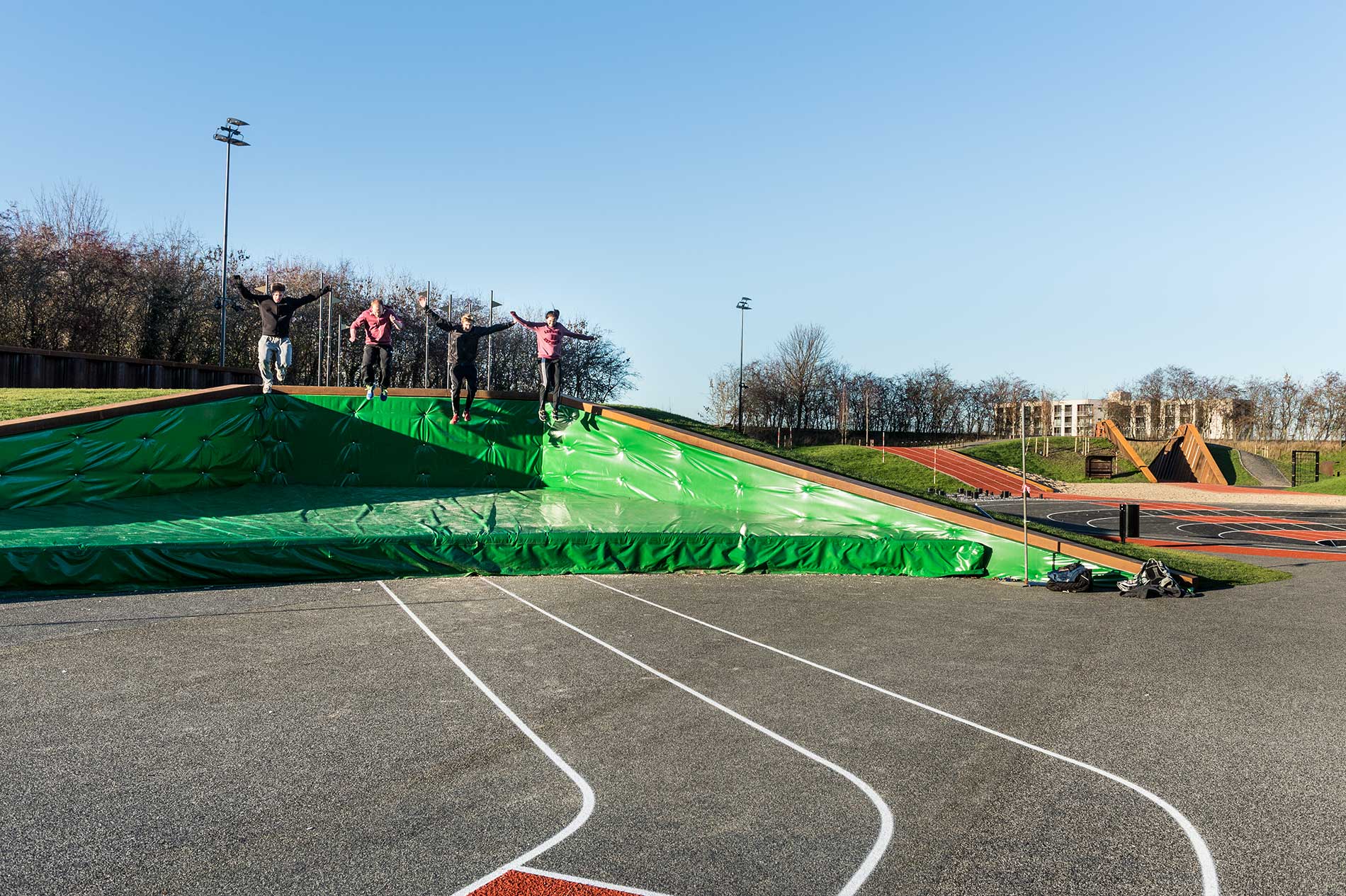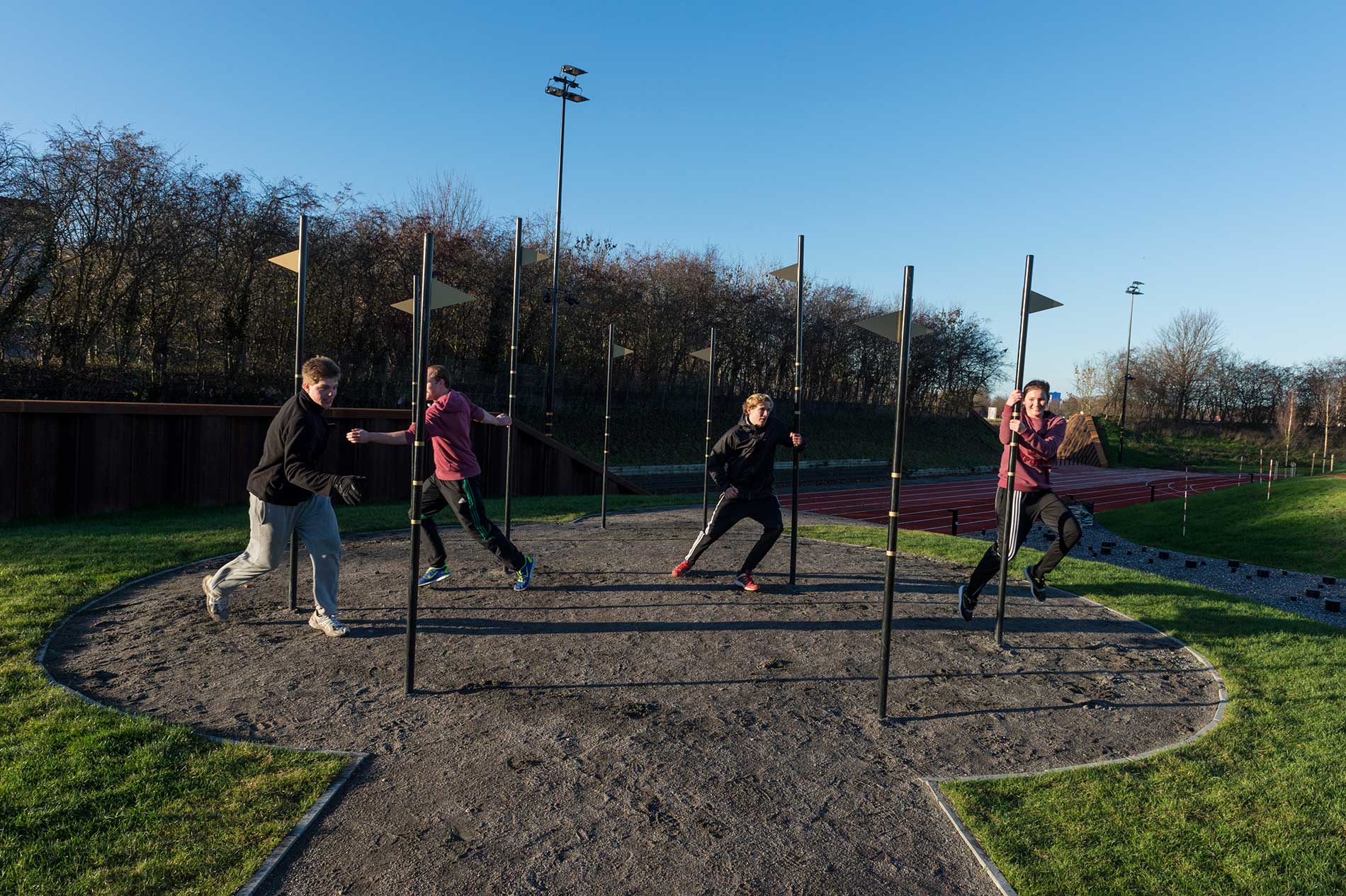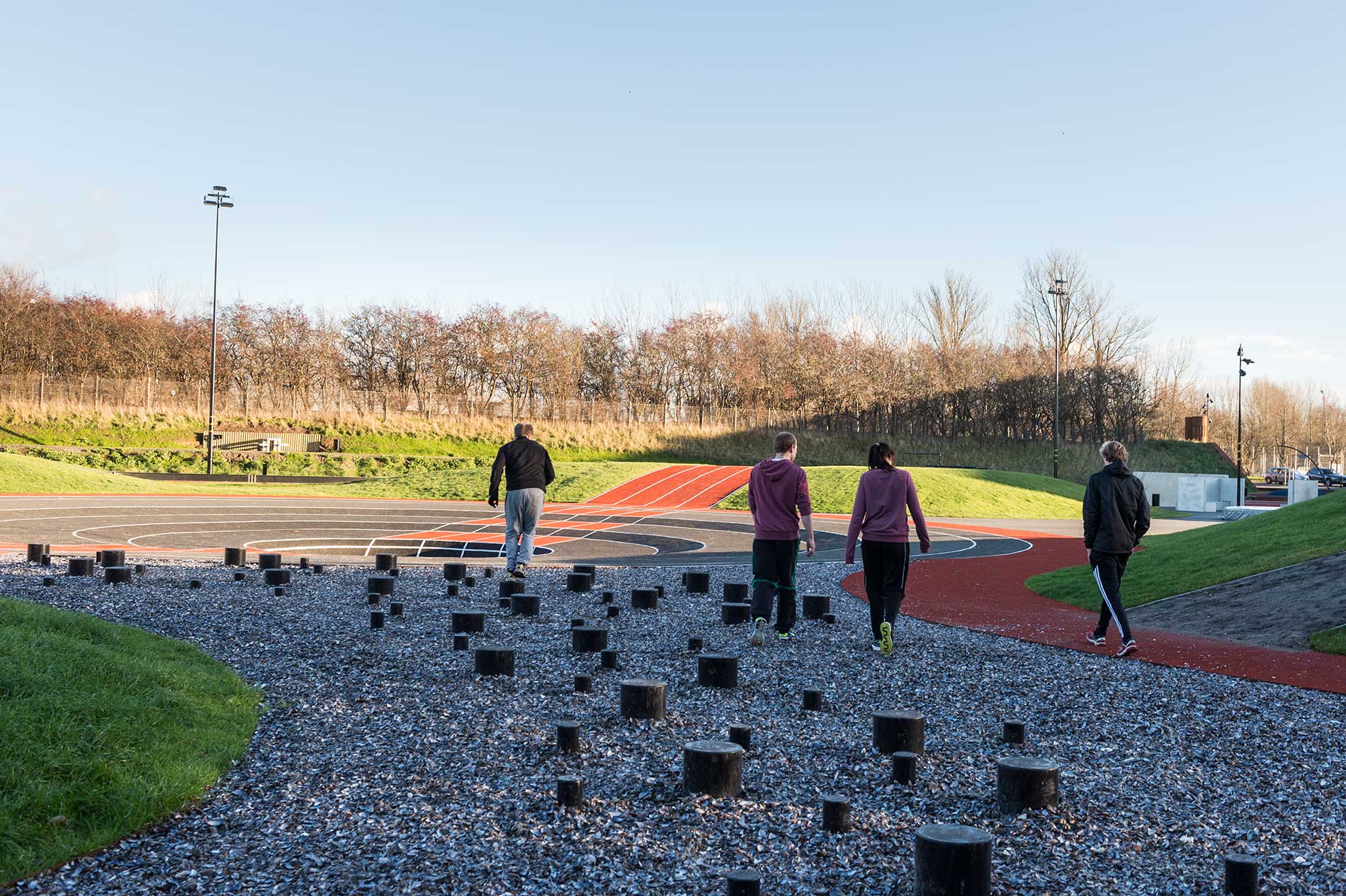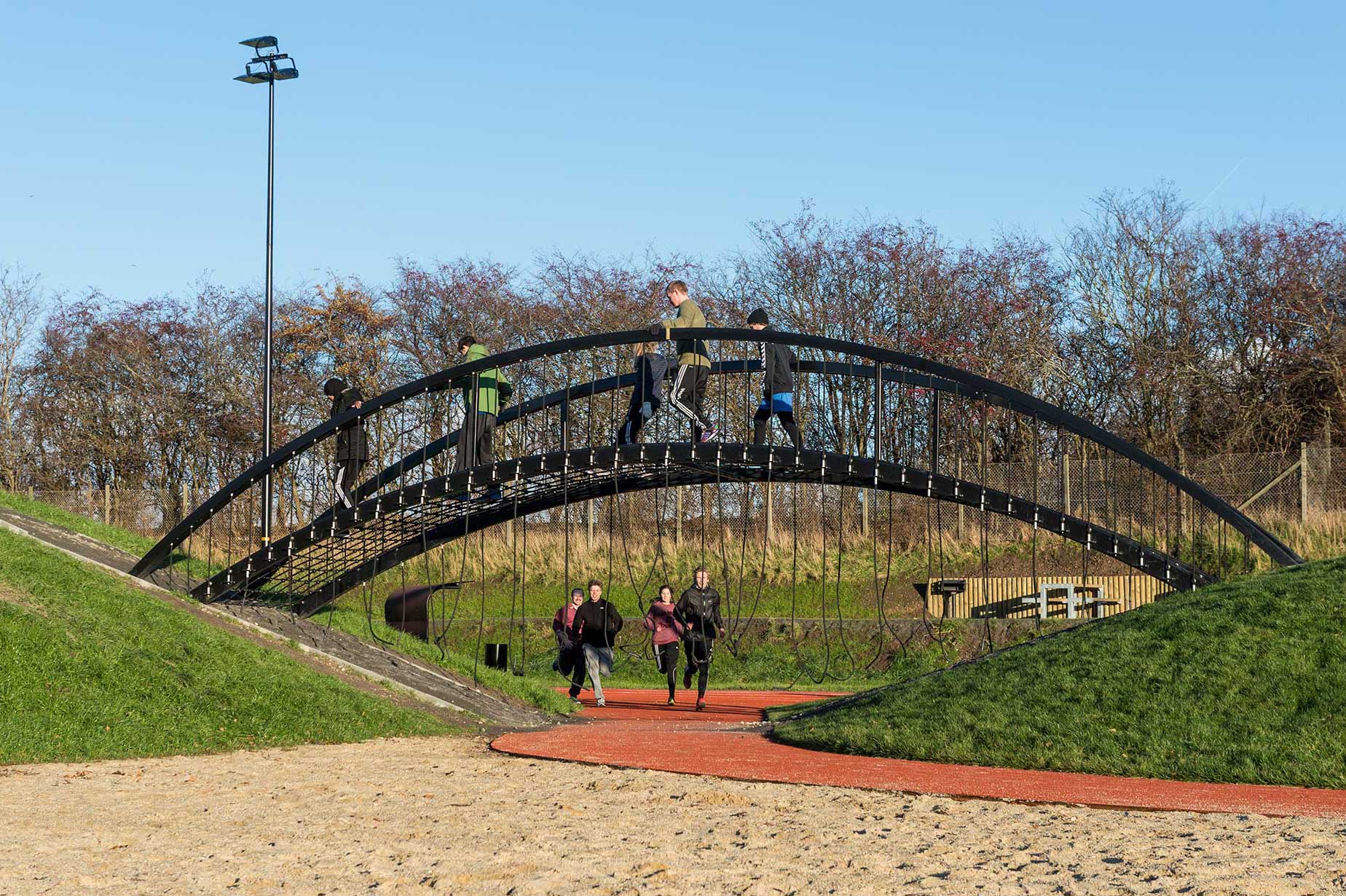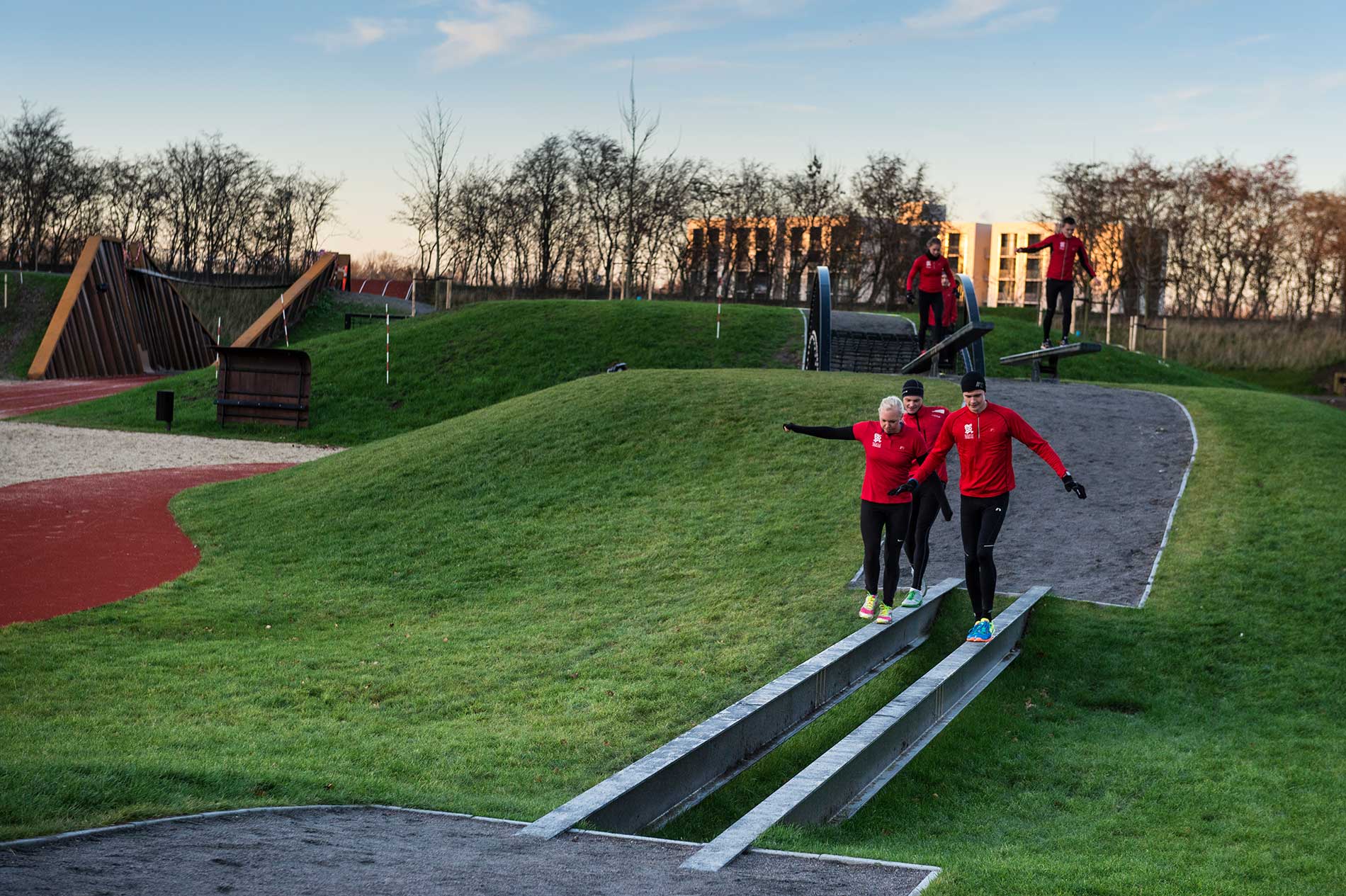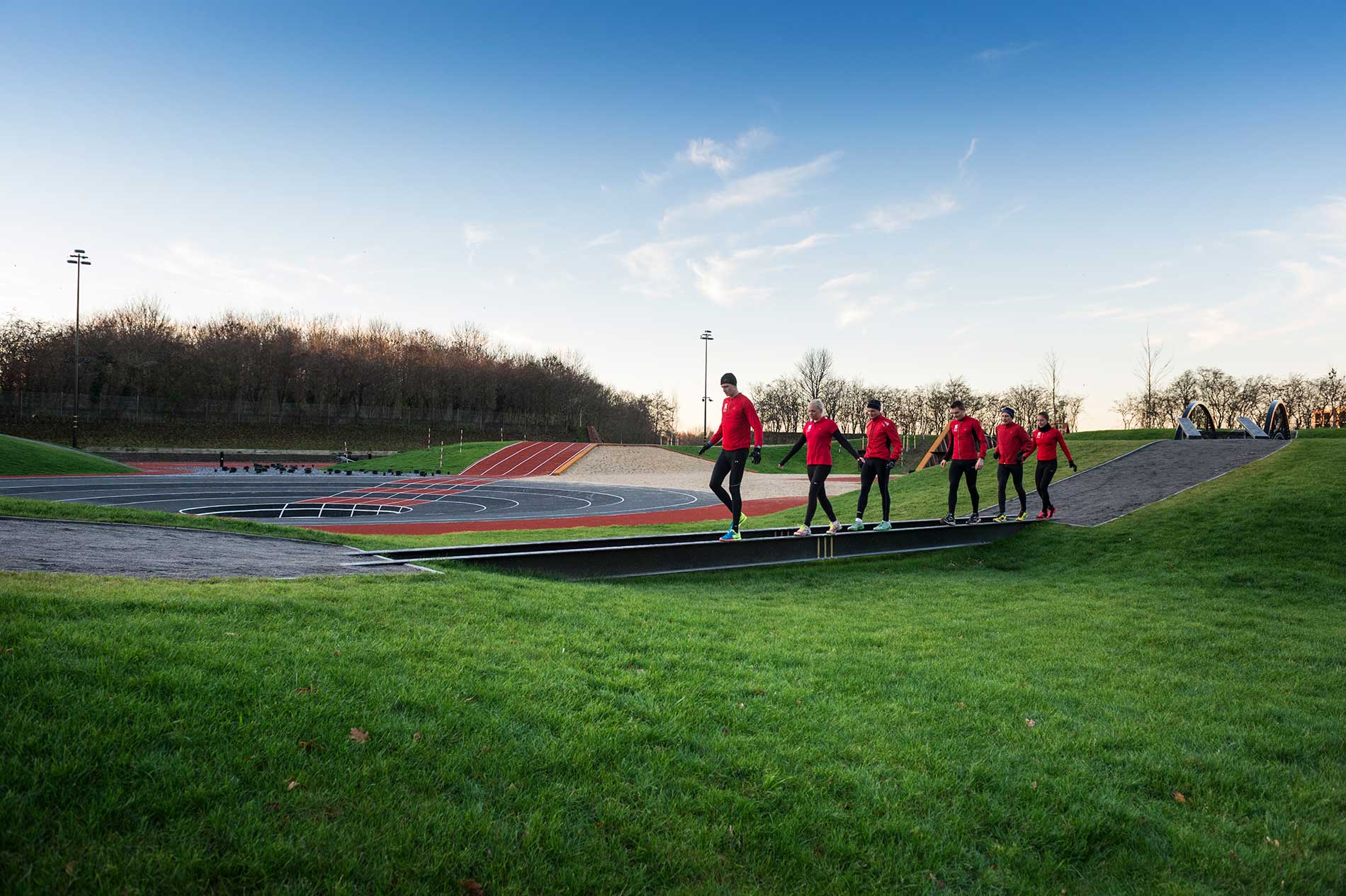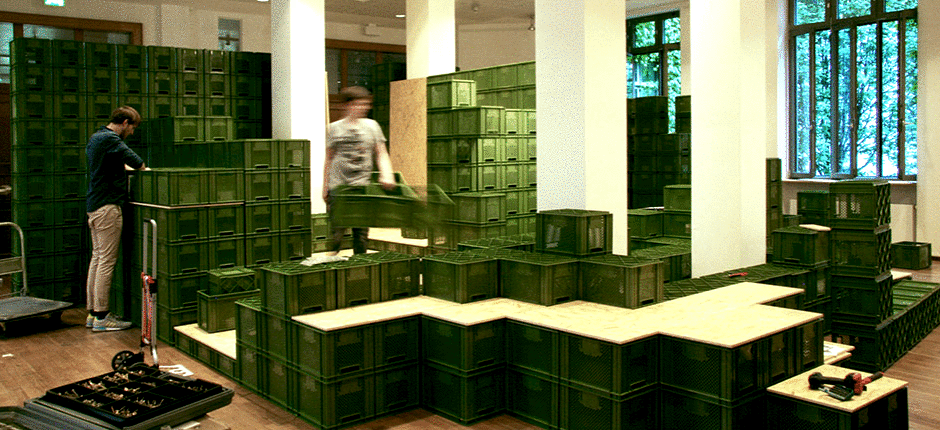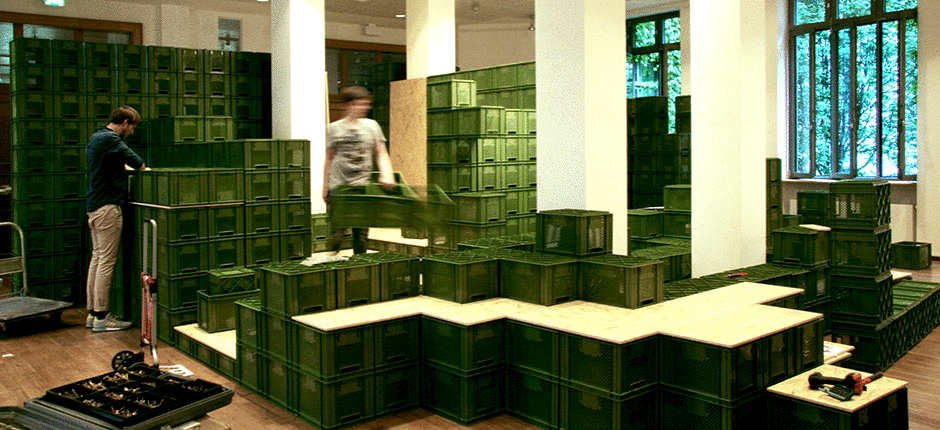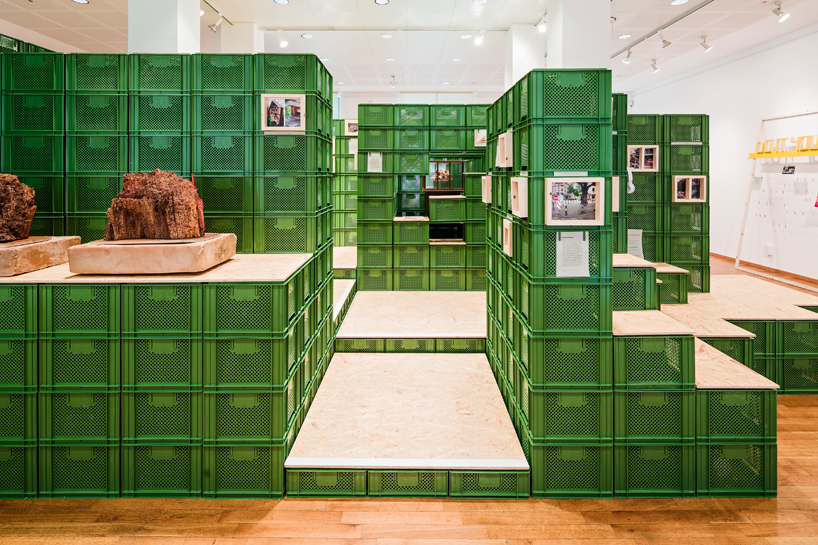Your Custom Text Here
BLOOM at WW Seymour Conservatory
Is there any better place than a conservatory for a plant-tastic light installation? For this most recent fundraising event, I joined WW Seymour Conservatory and LusioLights to bring out BLOOM. We installed our little flowers across a waterfall and small landscape…





In November I had the pleasure of bringing Bloom to the WW Seymour Conservatory in Tacoma! This was such a wonderful and unique installation, as the flowers were able to be installed into the interior landscape, creating a wonderful rolling affect. We also were able to tuck them away under trees and dark places to surprise guests as they came and went!
Thank you to LusioLIghts & the Conservatory for having me!
Bloom at Luminata 2019!
What I love about public art is how your original intention for a thing might be quite different from the actual experience or way the public interacts with it--and many times for the better! This was one of those times. Each flower was individually lit with its own battery and diode, but they weren't secured. In the past I've been able to just drop a diode and battery in to the bucket of the flower and viola! Illumination! …


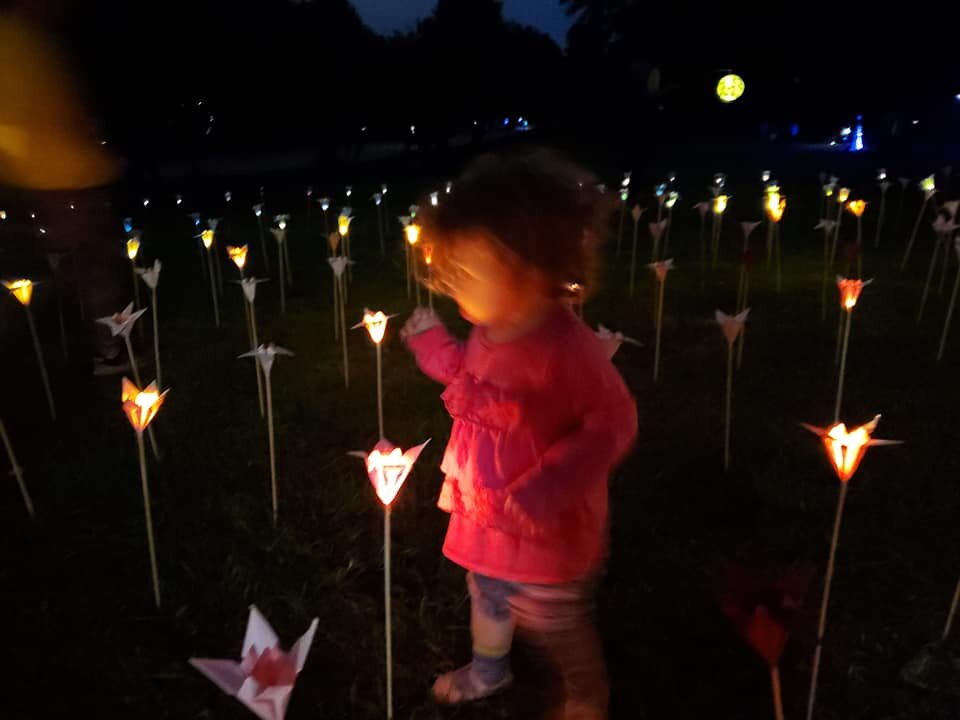



It was such a joy to bring Bloom to the Luminata Festival last night! We had easily 1000+ people walk through and enjoy the installation.
What I love about public art is how your original intention for a thing might be quite different from the actual experience or way the public interacts with it--and many times for the better! This was one of those times. Each flower was individually lit with its own battery and diode, but they weren't secured. In the past I've been able to just drop a diode and battery in to the bucket of the flower and viola! Illumination!
Well, the paths were set so narrow for walking and people at the festival had huuuge costumes knocking flowers to-and-fro. Before the first hour was out nearly half the garden was out of light due to costumes knocking batteries apart from diodes! So I ran home and grabbed some tape and began tape the diodes to the batteries--I knew I couldn't do them all (there are 500 flowers!) but at least salvage some throughout the night.
I thought I was going to be in for a full night of painstaking work but... as I was sitting in the center of the labyrinth taping lights together, a little girl came up to me all excited and was like "Oh my! Can -I- Light a flower in the garden?" And I was like, well of course! Thats one less light I have to stand up and set in place. So I give her a new light and she runs off. Not a second later another girl comes up and is like--oh my god, can I light one too? And before you know it I have a crowd of adults, children passing through on their way through the labyrinth asking to light flowers. Children are running and getting the disconnected lights and running back to light the garden.
It turned into this amazing experience where as the night went on the garden was slowly re-illuminated by all those walking through! 10 out of 10 a better way to bring this piece to life, and probably the way I will run the installation in the future too!
Big thanks to my folding team! Aaron Woodward, Rebecca Brightly, Tülin Kınacı, Elizabeth Cunningham, Brandee Laird, Chandler Stevens, Don Beeson, Jackson & Ca.t It was such an amazing experience and I had so many conversations of delight and joy from those who got to interact with and walk our installation
2019 Fall Season
Last Updated September 9th, 2019
This fall has some amazing things in store! From light art installation projects to public events and pop-ups, I hope to see you out sometime! I’ve tried to include a list of both confirmed and prospective events. My focus with my work this fall is all about surprise, joy, and interaction with both new spaces and new people.
if you’d like to get the conversation bar, pop-up playground, or commission me for light and art installation, please reach me at Caitlin@StudioMadefor.com
Sept 14
Greenlake Wellness Fair
Pop-up Playground
Come out and play! In partnership with my non-profit Parkour Visions, we will be setting up a pop-up playground for open play. All ages welcome. 10am to 4pm at Green Lake Community Center.
https://www.thestranger.com/events/41359431/green-lake-family-fun-and-wellness-fair
Sept 21
Luminata Light Festival
Bloom Art Installation
Bloom is a light art installation and walking labyrinth composed of handfolded LED flowers. Take a moment, journey into yourself through a walking meditation of light.
https://fremontartscouncil.org/luminata/
Sept 26-29
Art of Retreat
Leadership Retreat
The Art of Retreat is an idea-exchange platform supporting education, development, and leadership within Parkour. We come together twice a year, in the Spring and the Fall, to exchange new ideas and information across a wide array of subjects including coaching methods, education theory, best business practices, scientific research, architectural and urban design, global trends, and local community building.
www.artofretreat.com
UPCOMING
October 19 - Seacompression Art Festival by Ignition Northwest
Heart to Hearth - Interactive Installation in partnership with Aaron Woodward
October 19 - Lusio Lights at Volunteer Park Conservatory (About)
Bloom 2 - Light Installation
November 8 - Lusio Lights Seymour Conservatory (About)
December 15 - Seattle Water Lantern Festival
https://www.waterlanternfestival.com/seattle.php
Bloom - Light Installation
Architects as Required: Speaking at the AIA NY
Last month I had the opportunity to join a panel discussion and short series of presentations to share about my perspectives and work in the field of play and urban design. “Architects as Required” was an event put on by the Civic Leadership Program.
Movement for All
Question: Do you really want to only be changing the lives of those who can pay for it?
Some of the largest barriers to life-long participation in a physical activity are:
Lack of access
Lack of affordability
Lack of knowledge and
Lack of an integrated and supportive community.
The importance of movement to our physical, mental, and social health is undeniable. Aside from the obvious, it also has shown to do everything from normalizing blood sugar, reducing inflammation, and stimulating cell growth to effectively treating depression, improving your ability to learn, protecting your memory, and growing your brain. (1)
Thus, finding a way to ensure everyone has access to nourishing, sustainable, and FUN physical activity (because its the 'play' factor that keeps people engaged over the years) is CRITICAL to human and societal health.
Yet traditional sports and gym-going exercise, the most common forms of physical activity, face many if not all of these... with additional barriers emerging depending on age, gender, race, etc.
We need a better option, which is where Parkour comes in... Because, incredibly, Parkour effectively provides a path over, under, and through all those major barriers.
In brief: Parkour provides:
Access - do it any time, anywhere
Affordability - no equipment needed, no coaches
Open-Education - free online learning
Community - diverse, inter-generational
Anyone who has tried parkour knows that you don't need any special equipment or designated spaces. You can go out your front door--heck, you can stay in your living room if you really wanted--and have right there the means and methods of participating. There are so many styles, interpretations, and training approaches that you can find your fit.
Even more so, we have an incredible and supportive community that shares knowledge, tips, and tricks. There is a wealth of free online information, and groups dedicated to growing it. We couch surf, we work-swap, we bootstrap.
We have this great option, it breaks all these barriers.
❌❌ But wait. ❌❌
My question at the start wasn't to talk about how parkour is a cure to traditional options, but actually a question to Parkour as a community growing today. A question directed at all of those who are leaders, business owners, coaches, and practitioners in parkour! A question to ensure we remain conscious.
Do you really want to only be changing the lives of those who can pay for it?
Yes, Parkour is the path over those barriers, and people will still take advantage of it. But today, more and more people are learning and engaging with parkour through classes and gyms and paid services. Less and less we don't need to take parkour to people, because people come to us. But the people coming to us are those who can afford to do so. And we can't forget that.
As a community, we will commodify and put up paywalls. We share our highest quality content less frequently and worry about protecting our 'IP' and ideas. As business and demand grows, there is just less time to give to developing and running free events, free classes, free services. Less time to do outreach, figure out cultural dissonance. I get it. There are bills to pay, a gym to run, people to support.
I'm not writing this to make anyone feel bad. I too believe in charging what you're worth, and making a living doing the thing you love. But we need to realize that access is declining to a degree, and the culture around practice is shifting... and we need to take active steps to ensure Parkour continues to reach the populations who need it most.
That also is not to minimize anyones experience with parkour.
I have no doubt of the positive and deep impact of parkour on the lives of those who can afford classes and their bus fare and the bottle of water. Who have the privileged and means to participate. But I worry about the populations we are not so readily serving anymore... those that CANT afford or access a gym or a community, who might not have internet at home, or a support network to help. Even those don't know parkour is an option.
I often think about how in some ways it is almost MORE important than ever to give parkour to those populations (and find paths that are viable and sustainable.). I see it sort of as a responsibility, honoring the roots of where parkour came from, and its potential for impact.
Vision for the community
For me: I have a vision of society where people are able to live powerfully in the life they are given. I also believe in a society of humans who look after one another. Where we help others build the foundations they need so that they can grow and do the same.
💪We are stronger when those around us are strong too.
🔥We are more powerful when those around us are powerful too.
Parkour has a way of giving people a sense of personal power, a foundation to build upon, skills critical to being physically, emotionally, and socially fit. (Youve all probably seen my article on that subject.)
And while people of any walk of life and step of society feeling more powerful in their lives is important, I believe it is our responsibility as leaders and caretakers of the discipline to take the extra step to ensure we are giving power to the powerless, strength to the weak, mentorship to the lost, knowledge to the hungry, community to the unsupported.
Parkour... play. Our community, this movement. It has the power to rock the world, change peoples lives.
So, this is just a call to be more conscious. Mindful of the ways we grow and the roles we take and the businesses we build.
Do we want to only be changing the lives of those who pay for it?
Not sure where to start? There are a few small things you can do today in your community to keep the spirit of access, affordability, and open education alive. Off the top of my head...
✴ Run a free monthly meetup (or even better, get volunteers to do it!)
✴ Share your ideas --the beautiful thing is that when you give someone an idea, you don't lose it. You now both share it and can find a way to make it more impactful!
✴ Share your expertise. Write a little. Write a lot. Ask questions, answer questions. Make yourself available.
✴ If you do have the means, support groups, events, projects that are free and engaging their communities.
I try to take a stand every year, from sharing games to supporting experiences . I try to do probono work whenever possible, am working with Art of Retreat to make content available free online, and support the growth of healthy leadership. I support groups like Parkour Research and STURDYmade and Movement Games, and events like Winter Jam.
Parkour Visions is also going to be taking a stand. As a non-profit, we are uniquely positioned to meaningfully catalyze donors, access grants, and work with local government around the country to see the development and growth of programs targeting underserved populations. We are seeking meaningful partnerships / projects with individuals and groups across the country to bring Parkour and play to people across all dimensions of diversity, but especially those who need parkour most.
Join forces with me.
Build alliances with others.
Share challenge becuase we're stronger together :)
🤟
Caitlin@ParkourVisions.org
#changemaking
Question: Do you really want to only be changing the lives of those who can pay for it?
Some of the largest barriers to life-long participation in a physical activity are:
Lack of access
Lack of affordability
Lack of knowledge and
Lack of an integrated and supportive community.
The importance of movement to our physical, mental, and social health is undeniable. Aside from the obvious, it also has shown to do everything from normalizing blood sugar, reducing inflammation, and stimulating cell growth to effectively treating depression, improving your ability to learn, protecting your memory, and growing your brain. (1)
Thus, finding a way to ensure everyone has access to nourishing, sustainable, and FUN physical activity (because its the 'play' factor that keeps people engaged over the years) is CRITICAL to human and societal health.
Yet traditional sports and gym-going exercise, the most common forms of physical activity, face many if not all of these... with additional barriers emerging depending on age, gender, race, etc.
We need a better option, which is where Parkour comes in... Because, incredibly, Parkour effectively provides a path over, under, and through all those major barriers.
In brief: Parkour provides:
Access - do it any time, anywhere
Affordability - no equipment needed, no coaches
Open-Education - free online learning
Community - diverse, inter-generational
Anyone who has tried parkour knows that you don't need any special equipment or designated spaces. You can go out your front door--heck, you can stay in your living room if you really wanted--and have right there the means and methods of participating. There are so many styles, interpretations, and training approaches that you can find your fit.
Even more so, we have an incredible and supportive community that shares knowledge, tips, and tricks. There is a wealth of free online information, and groups dedicated to growing it. We couch surf, we work-swap, we bootstrap.
We have this great option, it breaks all these barriers.
❌❌ But wait. ❌❌
My question at the start wasn't to talk about how parkour is a cure to traditional options, but actually a question to Parkour as a community growing today. A question directed at all of those who are leaders, business owners, coaches, and practitioners in parkour! A question to ensure we remain conscious.
Do you really want to only be changing the lives of those who can pay for it?
Yes, Parkour is the path over those barriers, and people will still take advantage of it. But today, more and more people are learning and engaging with parkour through classes and gyms and paid services. Less and less we don't need to take parkour to people, because people come to us. But the people coming to us are those who can afford to do so. And we can't forget that.
As a community, we will commodify and put up paywalls. We share our highest quality content less frequently and worry about protecting our 'IP' and ideas. As business and demand grows, there is just less time to give to developing and running free events, free classes, free services. Less time to do outreach, figure out cultural dissonance. I get it. There are bills to pay, a gym to run, people to support.
I'm not writing this to make anyone feel bad. I too believe in charging what you're worth, and making a living doing the thing you love. But we need to realize that access is declining to a degree, and the culture around practice is shifting... and we need to take active steps to ensure Parkour continues to reach the populations who need it most.
That also is not to minimize anyones experience with parkour.
I have no doubt of the positive and deep impact of parkour on the lives of those who can afford classes and their bus fare and the bottle of water. Who have the privileged and means to participate. But I worry about the populations we are not so readily serving anymore... those that CANT afford or access a gym or a community, who might not have internet at home, or a support network to help. Even those don't know parkour is an option.
I often think about how in some ways it is almost MORE important than ever to give parkour to those populations (and find paths that are viable and sustainable.). I see it sort of as a responsibility, honoring the roots of where parkour came from, and its potential for impact.
Vision for the community
For me: I have a vision of society where people are able to live powerfully in the life they are given. I also believe in a society of humans who look after one another. Where we help others build the foundations they need so that they can grow and do the same.
💪We are stronger when those around us are strong too.
🔥We are more powerful when those around us are powerful too.
Parkour has a way of giving people a sense of personal power, a foundation to build upon, skills critical to being physically, emotionally, and socially fit. (Youve all probably seen my article on that subject.)
And while people of any walk of life and step of society feeling more powerful in their lives is important, I believe it is our responsibility as leaders and caretakers of the discipline to take the extra step to ensure we are giving power to the powerless, strength to the weak, mentorship to the lost, knowledge to the hungry, community to the unsupported.
Parkour... play. Our community, this movement. It has the power to rock the world, change peoples lives.
So, this is just a call to be more conscious. Mindful of the ways we grow and the roles we take and the businesses we build.
Do we want to only be changing the lives of those who pay for it?
Not sure where to start? There are a few small things you can do today in your community to keep the spirit of access, affordability, and open education alive. Off the top of my head...
✴ Run a free monthly meetup (or even better, get volunteers to do it!)
✴ Share your ideas --the beautiful thing is that when you give someone an idea, you don't lose it. You now both share it and can find a way to make it more impactful!
✴ Share your expertise. Write a little. Write a lot. Ask questions, answer questions. Make yourself available.
✴ If you do have the means, support groups, events, projects that are free and engaging their communities.
I try to take a stand every year, from sharing games to supporting experiences . I try to do probono work whenever possible, am working with Art of Retreat to make content available free online, and support the growth of healthy leadership. I support groups like Parkour Research and STURDYmade and Movement Games, and events like Winter Jam.
Parkour Visions is also going to be taking a stand. As a non-profit, we are uniquely positioned to meaningfully catalyze donors, access grants, and work with local government around the country to see the development and growth of programs targeting underserved populations. We are seeking meaningful partnerships / projects with individuals and groups across the country to bring Parkour and play to people across all dimensions of diversity, but especially those who need parkour most.
Join forces with me.
Build alliances with others.
Share challenge becuase we're stronger together :)
🤟
Caitlin@ParkourVisions.org
#changemaking
“What man actually needs is not a tensionless state but rather the striving and struggling for some goal worthy of him. What he needs is not the discharge of tension at any cost, but the call of a potential meaning waiting to be fulfilled by him.”
Victor Emil Frankl
Madefor Issue 001
Hi everyone!
I'm very excited to be sitting here putting the final touches on the very first Madefor Design digest! Over the last 6-7 years I have been researching play and design, focusing intensely on where and how they intersect. I am obsessed with figuring out how to use design to invite others to break the social barrier and engage in movement and playful activity. In this time I have also compiled a vast library of resources, from books to construction materials to projects and more. I hope you find something within to inspire your work!
This issue I kept is short & sweet with three little projects . In the future I'll drop a couple more per issue, and there will always be posts going up on the blog. Feel free to email me things you find as well Caitlin@StudioMadefor.com
Enjoy!
Caitlin
PS - Don't forget to subscribe!
Athletics Exploratorium
The Athletics Exploratorium by Keingart Architects is the epitome of creative invitations to play. What makes this project really work is that it takes a traditional track & field, which comes complete with its own expectations of movement and behavior, and it juxtaposes it with the unexpected. People are drawn off the track and into these alternative uses, and before they know it, they are using their body in ways they haven't before.
TAKE AWAY IDEA
How can you twist up something that already involves movement in order to broaden someones perspective? How can you change a soccer field? Or a baseball field? Or even tennis courts? What are things we can do to blacktops & other surfaces?
Vegetable Crates! with Yalla Yalla!
With Yalla yalla!
Germany, 2015
I won't lie, I am pretty much OBSESSED with crate installations. I have a whole library folder chock full of these types of projects, and this won't be the last one I share. Crate constructions just seem like that sweet intersection between do-it-yourself, creative reuse, budget-friendliness, and cool. Plus, you'd be surprised how sturdy these structures can be once assembled.
This installation stacks vegetable crates and tops them with OSB to create a walking surface. It is used more as a display space than a play space, but I can only imagine re configuring the whole structure to be lower to the ground and good for jumping around on.
TAKE AWAY IDEA
Use crates! There definitely needs to be more experimentation in the world of pop-up playground/temporary structures with crates. They are cheap, easy to move around, and, again, surprisingly sturdy when clustered correctly.
All wrapped up
There are a couple of projects that I've seen over time that wrap scaffolding with fabric and plastic in order to define space, create privacy, and visually draw people in.
TAKE AWAY IDEA:
Vertically wrapping instead of horizontal would not only define space and create these pockets but also allow for people to pass through--a fun play between privacy and publicity.
Morag Myerscough and Luke Morgan - Temple of Agape - Southbank UK
PopSugar & ShopStyle's Cabana Club at Cochella
Forest Temple
I love this small intervention by Casagrande Laboratory and Marco Casagrande. It is simple but creates a cozy, atmospheric space for gathering and ritual.
TAKE AWAY IDEA
I'm particularly enamored with the way he used rope and am obsessed thinking about what would have to be done to make the rope secure enough to be 'climbable'. I am sure there is enough friction and tension to allow for it, but could you imagine low walls of rope going through a forest?
Adaptive Reuse: From Silos to Climbing Walls
Proposed by NL Architects, based in Amsterdam
Siloo is an adaptive reuse project that envision a new life for a set of abandoned silos. It proposes both exterior renovations to extrude the surfaces and develop the surrounding public space, as well as turning the interior into a climbing space as well. Read more about the project here.
The Undefined Playground
Designed by BUS Architects, the Undefined playground is a modular, portable, and collapsible playground system that can be dropped into an open/public space, transforming it into a play space.
I really love the considerations towards multi-use, and the considerations towards borrowing equipment. I'm curious to know how hard/heavy it is to maneuver, as well as if there is any more seating that gets pulled out. That would probably be my biggest critique (which is small, at that!). Great ideas here.
The Hills on Governors Island
The opening of the Hills on Governors Island was one of the events of the 2016 summer that I looked forward to the most. I was quivering with excitement to go and play on the real-life version of those sexy images released showing mountains of stone and wood!
In the weeks following the opening, you could go and find people laying around on the large stones on the hill, as well as running up and down. That the space inspired movement (hiking, exploring) is without a doubt.
However, the island is failing to meet the potential of the space by policing the behaviors of adults and teenagers. There were plenty of children running and jumping between the large stones, with no issue. As soon as an adult went to do the same, however, a guard quickly came over and asked us to cease and desist. They cited concerns for safety, as well as the sturdiness of the structure itself.
If an adult jumping between two of these stones might cause a structural security issue, then perhaps this shouldnt be open to the public. Lets be real.
This is an excellent example of where you have a design being failed by policy. In my manifesto, I lay out three key elements to playspaces being able to realize their fullest potential---one of which is support of the space through the development of tolerant and flexible public policy.
Hopefully the island will become more lax with the years.
Swarovski Playground
This four-story temple to play in the Austrian mountains, designed by Snohetta, is a collection of interesting spaces for movement and social interaction! Being a large and self-contained facility, it appears that many of the spaces are friendly both to adults and to kids. There are spaces to indulge as well as to spectate--and it seems to operate more like a public space than an exclusive playground.
Differences in Play: How our ideas of play differ with demographics, and how those differences are manifested in design
When you look then, at these two spaces, playgrounds and fitness parks, you will see two drastically different ideas on what 'play' is.
We all recognize the importance of play for children. New York City alone is home to hundreds of children’s playgrounds–adventure and imagination playgrounds, modern designs, interactive sculptures, nature inspired, wood constructions, loose parts, prefab structures, and more. The city seems to be devoted to designing, building, and renovating new & interesting places for children to play.
But what about all those teenagers and adults?
For some reason children are the only ones allowed to indulge in play, according to society. Teenagers and Adults who attempt to engage in some form of childhood play are dismissed as unproductive, self-indulgent, and immature; and are told to ‘grow up’ and be more responsible. There must be structure and goals.
And, sadly, the city and society seems to agree by its construction. Sure, there are hundreds of playgrounds, but how many are adults allowed to use? And those that ARE designed for adults, what do they say about our expectations when it comes to adult play?
'Adult' Playgrounds
'Childrens' Playgrounds
Let’s take a look at an example that will reflect the city at large–Central Park. In Central Park there are 21 designated playgrounds (https://www.nycgovparks.org/parks/central-park/facilities/playgrounds). Of those 21, however, a grand total of 0 are allowed to be used by teenagers or adults. Instead, for adults, the park provides basketball and tennis courts, recreation centers, and soccer fields--all highly structured activities either requiring equipment or membership. The closest thing to a playground that adults receive is a fitness park--just 1--which is a series of pull up bars and sit up stations.
And, when you look then, at these two different spaces for play, you will see two drastically different ideas on what 'play' is.
- For children, play is imaginative, creative, and open ended. There are no guidelines on how to use the equipment (though most contemporary out-of-the-box systems certainly have movement expectations built in--for another time). There are bright colors, there are large structures, there are moving parts, sand, blocks, water, etc.
- For adults, it is goal-oriented, structured, and well-established. Each piece is isolated, with instructions and directions. There is no room really for free thought beyond how many reps am I doing. Everything is contained, stable. Pull up station, sit up station. Balance here, specifically, but not really anywhere else.
It is established that adults need play as much as children in order to nourish and support their mental, physical, cognitive, and social health---so why are our spaces so drastically different?
Grounds for Play: Towards a Ludic Architecture
This November, I will be daily releasing a series of short reflections as I organize my thoughts, research, and ideas about the American Playground and its place in the future of urban and public spaces.
Specifically I will be trying to (1) document the history of the playground in the modern era, (2) examine physical spaces from which games, play, and ludic behavior have naturally emerged over time, (3) inventory exemplary cases, on both extremes of success and failure, (4) explore potential principles for designing play into public spaces, and (5) argue for the elimination of the playground as an autonomous, isolated, and un-integrated space in our cities.
This will culminate in a guidepost, a set of principles and recommendations--a manifesto for the next great american playground, and the future of play in our urban fabric.
Inventory of Posts:
Current Questions:
This section is a sort of dumping grounds for questions and ideas I wish to explore. This is a 'living' post and will be updated regularly as the month moves along.
- How do we define play, playground, and play-ground?
- How do these definitions change when cross-sectioned with demographics, and how are these differences in definition and expectation manifested in design?
- What is a ludic space, what are our goals, and how do we measure its 'success'.
- What are the most common features of oustanding ludic spaces? Failing ones?
- What are our major influencing factors involved in whether or not it is a 'success'.
- Cultural influences
- Player / Emotional background
- Physical dimensions
- The Age of Guerrilla Play; How our bad decisions in design has lead to the re-appropriation of public space and a counterculture of movement.
Michael Grossert's 'Walk-in Sculpture'
One of many of the post-war experimental playground designers, Michael Grossert is a swiss sculptor who designed a small number of play sculptures in the late 1960s, early 1970s.
The phrase he used to describe his work was 'walk-in sculpture'--where the public can interact in a more complete way with the work,, walking through, under, around, and on his work. Some of his larger and later ideas were whole landscapes of shapes and colors that would excite the passerby.
Additional Readings & Sources
- "3 Playgrounds, 1967–1975" at New Jerseyy, Switzerland
- Art Agenda:
- Exhibition Release
Jim Miller-Melberg Scuplture & Playscapes
Jim Miller is an american sculptor behind a series of modernist playgrounds built between the 1960s-80s.
'Castle' by Jim Miller reminds me of what our Parkour community here in New York City lovingly calls "Scoops" on the lower east side. Maybe Jim was behind that build--no doubt possible, since many of his designs were produced by Wausau Tile and appeared in their catalogues. Below I included a few images that I found on the Playscapes blog and Jims website.
While in many ways these sculptures are directed towards kids, especially in sizing, I have found that the version of these structures at Scoops brings in a wide range of ages, who jump between the tops and use the taller ones as walls. I think the modules could be arranged in a way that definitely appeals to a wider age range if they were to be built again--perhaps even scaled up for older groups?
'Castle' in Soho, NYC
Aldo van Eyck - Playground as a place for the entire community.
Eyck designed and oversaw the construction of numerous playgrounds in the Netherlands. His attention to the human scale & personal experience is delightful, as well as his attempt to blend play into the every day city.
To consider the city is to encounter ourselves.
To encounter the city is to rediscover the child.
If the child rediscovers the city,
the city will rediscover the child –ourselves.
-- Van Eyck, 2008 [1962]:25
Oosterpark, Amsterdam, Netherlands
Eyck is a dutch architect who paid particular attention to the emotional & socio-cultural impacts of architecture & space. He created street and playground infrastructure that was ambiguous in use, and regularly took into consideration the other user groups (teens, adults, elderly).
This image just below starts to connect with me. Though underdeveloped, and quite small, it was crafted with all of the potential users in mind. It is a space for play, as well as relaxing and passage. All ages could find use here. Playgrounds disguised/build into the every day.
Amsterdam, Netherlands
“According to van Eyck, urban playing equipment should be part of the city to the point of disappearing into everyday life and becoming ubiquitous, as it happens with telephone cabins, benches or posts.”
- Nicolas Stutzin
Amsterdam, Netherlands
Amsterdam, Netherlands
BEFORE & AFTER : Amsterdam, Netherlands
Again, I think it really is Eycks approach and thoughtfulness that sets him apart in his designwork, and his writings are well worth getting your hands on. There are a few books out on his work including Seventeen Playgrounds by Denisa Kollarova and Anna van Lingen (which I have on order). His own work, The Playground and the city, is hard to get a hold of save for your library... so go check it out!
Bonus Reading & Sources:
https://walkonwildsideanna.wordpress.com/2014/10/14/aldo-van-eyck-the-playgrounds-and-the-city/
https://childrenoftechnology.wordpress.com/2012/10/04/aldo-van-eyck-the-playgrounds-and-the-city/
https://merijnoudenampsen.org/2013/03/27/aldo-van-eyck-and-the-city-as-playground/

















